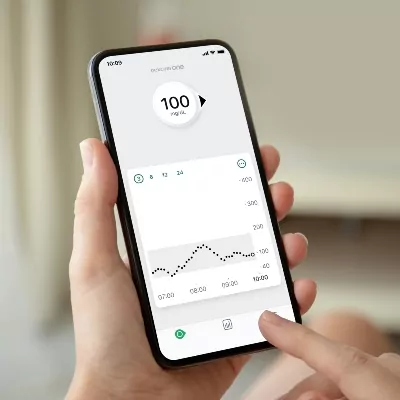Continuous Glucose Monitoring (CGM) Systems
Continuous Glucose Monitoring (CGM) systems monitor blood glucose levels at regular intervals, 24 hours a day. The data can be downloaded in our clinic, and we can adjust insulin doses accordingly. This enables patients to manage their blood sugar levels proactively. In addition to this, frequent monitoring gives insight into the effects of diet, exercise, and sickness on an individual’s glucose levels.
Benefits Of CGM
The systems can help in the following:
- Record extremely low overnight blood sugar levels, which often go undetected
- Show early morning spikes in blood sugar.
- Evaluate how diet and exercise affect you.
- Determine if your treatment plan works on a day-to-day basis.
Real-time continuous glucose monitoring decreases the risk of severe hypoglycemia in people with type 1 diabetes and impaired awareness of hypoglycemia.


Who Can Use CGM?
Your doctor may recommend CGM if you have:
- Major highs and lows in your blood sugar levels for no clear reason
- Gestational diabetes, which happens during pregnancy
- An insulin pump
- Blood sugar levels that are very low, called hypoglycemia, or very high, called hyperglycemia.
Special Care While Using CGM
- You may need to check GCM twice a day to calibrate the CGM (certain brands/models only).
- Whenever the CGM alarms about high or low blood glucose levels, you should follow your treatment plan to bring your glucose into the target range or consult the doctor.
- Depending on the model, you might need to replace the CGM sensor based on the manufacturer recommendations.

